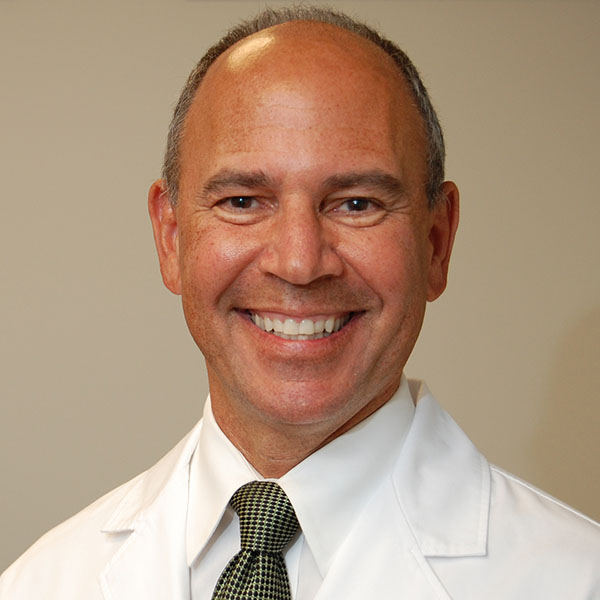
What is a tongue-tie? What parents need to know

The tongue is secured to the front of the mouth partly by a band of tissue called the lingual frenulum. If the frenulum is short, it can restrict the movement of the tongue. This is commonly called a tongue-tie.
Children with a tongue-tie can’t stick their tongue out past their lower lip, or touch their tongue to the top of their upper teeth when their mouth is open. When they stick out their tongue, it looks notched or heart-shaped. Since babies don’t routinely stick out their tongues, a baby’s tongue may be tied if you can’t get a finger underneath the tongue.
How common are tongue-ties?
Tongue-ties are common. It’s hard to say exactly how common, as people define this condition differently. About 8% of babies under age one may have at least a mild tongue-tie.
Is it a problem if the tongue is tied?
This is really important: tongue-ties are not necessarily a problem. Many babies, children, and adults have tongue-ties that cause them no difficulties whatsoever.
There are two main ways that tongue-ties can cause problems:
- They can cause problems with breastfeeding by making it hard for some babies to latch on well to the mother’s nipple. This causes difficulty with feeding for the baby and sore nipples for the mother. It doesn’t happen to all babies with a tongue-tie; many of them can breastfeed successfully. Tongue-ties are not to blame for gassiness or fussiness in a breastfed baby who is gaining weight well. Babies with tongue-ties do not have problems with bottle-feeding.
- They can cause problems with speech. Some children with tongue-ties may have difficulty pronouncing certain sounds, such as t, d, z, s, th, n, and l. Tongue-ties do not cause speech delay.
What should you do if think your baby or child has a tongue-tie?
If you think that your newborn is not latching well because of a tongue-tie, talk to your doctor. There are many, many reasons why a baby might not latch onto the breast well. Your doctor should take a careful history of what has been going on, and do a careful examination of your baby to better understand the situation.
You should also have a visit with a lactation specialist to get help with breastfeeding — both because there are lots of reasons why babies have trouble with latching on, and also because many babies with a tongue-tie can nurse successfully with the right techniques and support.
Talk to your doctor if you think that a tongue-tie could be causing problems with how your child pronounces words. Many children just take some time to learn to pronounce certain sounds. It is also a good idea to have an evaluation by a speech therapist before concluding that a tongue-tie is the problem.
What can be done about a tongue-tie?
When necessary, a doctor can release a tongue-tie using a procedure called a frenotomy. A frenotomy can be done by simply snipping the frenulum, or it can be done with a laser.
However, nothing should be done about a tongue-tie that isn’t causing problems. While a frenotomy is a relatively minor procedure, complications such as bleeding, infection, or feeding difficulty sometimes occur. So it’s never a good idea to do it just to prevent problems in the future. The procedure should only be considered if the tongue-tie is clearly causing trouble.
It’s also important to know that clipping a tongue-tie doesn’t always solve the problem, especially with breastfeeding. Studies do not show a clear benefit for all babies or mothers. That’s why it’s important to work with a lactation expert before even considering a frenotomy.
If a newborn with a tongue-tie isn’t latching well despite strong support from a lactation expert, then a frenotomy should be considered, especially if the baby is not gaining weight. If it is done, it should be done early on and by someone with training and experience in the procedure.
What else should parents know about tongue-tie procedures?
Despite the fact that the evidence for the benefits of frenotomy is murky, many providers are quick to recommend them. If one is being recommended for your child, ask questions:
- Make sure you know exactly why it is being recommended.
- Ask whether there are any other options, including waiting.
- Talk to other health care providers on your child’s care team, or get a second opinion.
About the Author

Claire McCarthy, MD, Senior Faculty Editor, Harvard Health Publishing
Claire McCarthy, MD, is a primary care pediatrician at Boston Children’s Hospital, and an assistant professor of pediatrics at Harvard Medical School. In addition to being a senior faculty editor for Harvard Health Publishing, Dr. McCarthy … See Full Bio View all posts by Claire McCarthy, MD

Dialectical behavior therapy: What is it and who can it help?

Feeling sad, anxious, or angry at times is a normal part of the human experience. But do you — or someone you’re close to — seem to experience these and similar emotions more quickly, more frequently, and more intensely than most people?
This problem, known as emotional dysregulation, is a hallmark of many mental health conditions, but especially borderline personality disorder. The most effective treatment for borderline personality disorder is dialectical behavior therapy (DBT), which has also been shown to help people experiencing other issues. What is DBT, who might benefit from this form of therapy, and how is it applied?
What is DBT?
DBT focuses on teaching people skills to manage intense emotions, cope with challenging situations, and improve their relationships. It encourages people to learn and use mindfulness training in practical ways.
During individual and group sessions, therapists encourage a nonjudgmental attitude and emphasize acceptance, compassion, and other aspects of mindfulness.
Who may benefit from DBT?
DBT has a proven track record for addressing the most debilitating symptoms of borderline personality disorder: self-injury and suicide threats or attempts. It is now also used to treat depression, post-traumatic stress disorder, eating disorders, and substance use disorders.
In fact, the cornerstone of DBT — the skills training — can help anyone navigate emotionally charged situations with more ease.
How can mindfulness change how people experience strong emotions?
Many people in therapy have very strong emotions that lead to negative thoughts, says Dr. Blaise Aguirre, a psychiatrist who founded the 3 East Dialectic Behavior Therapy Continuum at Harvard-affiliated McLean Hospital. “They say things like, ‘I’m stupid,’ or ‘I can’t control my anger,’ or ‘No one will ever love me,'” he says.
The mindfulness aspect of DBT teaches people to pay careful attention to the nature, quality, and volume of their thoughts. The idea is to observe these thoughts as separate from yourself without identifying with their meaning. This is the first step to addressing the impact of those thoughts, Dr. Aguirre explains.
How does DBT differ from cognitive behavioral therapy?
DBT is derived from cognitive behavioral therapy (CBT). CBT assumes that certain negative thoughts (cognitions) are distortions, and if you learn how to swap those distorted thoughts with more productive ones, you’ll be less depressed or anxious.
“But for someone with very deep emotions and convictions, telling them that their thoughts and feelings are somehow ‘wrong’ feels very invalidating,” says Dr. Aguirre. A DBT-trained therapist would instead acknowledge that the person’s thoughts make sense, given who they are and their experiences. This practice, known as validation, is a central tenet of DBT. It’s key to know that you can validate a person’s thoughts even if you don’t agree with them.
That concept touches on the core of DBT — the dialectical part. It refers to the idea that two opposite things can be true at the same time. Rather than viewing things in extremes of black and white, DBT encourages people to recognize there’s more than one way to view a situation and to try to “walk the middle path.” A classic DBT mantra is “I’m doing the best that I can in this moment, and I want to and can do better.”
What other skills does DBT rely on?
In addition to mindfulness, DBT teaches three other main skills:
- Distress tolerance is the ability to manage emotional distress in the moment, using techniques such as distraction.
- Emotion regulation involves recognizing, accepting, and managing intense emotions.
- Interpersonal effectiveness focuses on improving communication with other people to strengthen relationships and improve your self-esteem.
What does DBT entail?
Ideally, DBT includes one-on-one sessions with a therapist (who is also available between sessions for phone or text coaching). The one-on-one sessions are combined with weekly group sessions led by a therapist who teaches the specific, interconnected skills and gives homework that helps to reinforce the skills. Participants are encouraged to keep a daily diary to track their emotions, behaviors, reactions, and examples of how they’re practicing their skills.
DBT has been shown to be effective for people ranging from adolescents to older adults with a range of mental health conditions. It appears to be especially useful for adolescents, perhaps for the same reason that it’s easier to learn a language or how to play an instrument when you’re younger rather than older, says Dr. Aguirre.
Are there different options for gaining access to DBT?
Accessing the full DBT experience can be challenging for many people. The skills groups meet for one to two hours weekly for six to 12 months, which is in addition to weekly, hour-long sessions with an individual therapist. Individual therapy may cost as much as $250 to $300 per hour, and the groups are often around $100 per hour. Not all DBT providers accept insurance.
“We’re starting to recognize that the majority of people can improve just doing the skills groups and don’t need the full DBT,” says Dr. Aguirre.
But for teens who are suicidal or harming themselves, intensive DBT can help keep them out of the hospital and potentially save their lives. “If your child had cancer, you wouldn’t think twice about taking them in for chemotherapy infusions twice a week,” says Dr. Aguirre.
Another problem is that there aren’t many DBT-trained providers in less populated parts of the country. Online DBT therapy may be an option, although its effectiveness hasn’t been studied.
Is there one simple DBT tool I can try?
If a family member struggles with very strong emotions, Dr. Aguirre offers this mini-DBT lesson about validation. Situations that trigger intense emotions are often rooted in a perception of abandonment, neglect, or rejection, he says. For example, if a person believes that someone at work is avoiding them, or a romantic partner doesn’t show up on time, it can trigger a rapid rise in emotional distress.
Here’s what to avoid saying:
“You have to calm down.”
“You are making a big deal over nothing.”
“When I am upset, I make myself a nice cup of tea and that should help you, too.”
Here’s what you can say instead:
“You seem really upset. Do you want to talk about it, or do you want some time by yourself?’
“You seem very sad. I am around if you want to talk.”
“Is there anything that I can do to help?”
“These types of statements validate the person’s feelings and convey that you’re listening and open to helping, if that’s what they want,” says Dr. Aguirre.
About the Author

Julie Corliss, Executive Editor, Harvard Heart Letter
Julie Corliss is the executive editor of the Harvard Heart Letter. Before working at Harvard, she was a medical writer and editor at HealthNews, a consumer newsletter affiliated with The New England Journal of Medicine. She … See Full Bio View all posts by Julie Corliss
About the Reviewer

Howard E. LeWine, MD, Chief Medical Editor, Harvard Health Publishing
Dr. Howard LeWine is a practicing internist at Brigham and Women’s Hospital in Boston, Chief Medical Editor at Harvard Health Publishing, and editor in chief of Harvard Men’s Health Watch. See Full Bio View all posts by Howard E. LeWine, MD

New guidelines aim to screen millions more for lung cancer

Lung cancer kills more Americans than any other malignancy. The latest American Cancer Society (ACS) updated guidelines aim to reduce deaths by considerably expanding the pool of people who seek annual, low-dose CT lung screening scans.
Advocates hope the new advice will prompt more people at risk for lung cancer to schedule yearly screening, says Dr. Carey Thomson, director of the Multidisciplinary Thoracic Oncology and Lung Cancer Screening Program at Harvard-affiliated Mount Auburn Hospital, and chair of the Early Detection Task Group for the ACS/National Lung Cancer Roundtable. Currently, fewer than one in 10 eligible people in the US follow through on recommended lung screenings.
What are the major changes in the new ACS lung cancer guidelines?
The updated ACS guidelines are aimed at high-risk individuals, all of whom have a smoking history. And unlike previous ACS recommendations, it doesn’t matter how long ago a person quit smoking. The updated guidelines also lower the bar on amount of smoking and widen the age window to seek screening, which aligns with 2021 recommendations issued by the US Preventive Services Task Force.
These changes combined may mean another six to eight million people will be eligible to have screening.
How many people get lung cancer?
Although lung cancer is the third most common malignancy in the United States, it’s the deadliest, killing more people than colorectal, breast, prostate, and cervical cancers combined. In 2023, about 238,000 Americans will be diagnosed with lung cancer and 127,000 will die of it, according to ACS estimates.
What is the major risk factor for lung cancer?
While people who have never smoked can get lung cancer, smoking and exposure to secondhand smoke is a major risk factor for this illness. Smoking is linked to as many as 80% to 90% of lung cancer deaths, according to the CDC.
Indeed, people who smoke are 15 to 30 times more likely to develop or die from lung cancer than those who don’t. The longer someone smokes and the more cigarettes they smoke each day, the higher their risks.
Is lung cancer easier to treat if found in early stages?
Yes. As with many cancers, detecting lung malignancies in their earliest stages is pivotal to improving survival.
Depending on the type of lung cancer diagnosed, up to 80% to 90% of people with a single, early-stage tumor that can be removed surgically can survive five years or longer, says the American Society of Clinical Oncology. The number of people who survive long-term becomes smaller as tumors grow larger, and if they spread to lymph nodes or other areas of the body.
Should you consider lung CT screening?
The updated ACS guidelines recommend screening if you:
- Are 50 to 80 years old. This age range is expanded from the prior ACS recommended cutoff of 55 to 74.
- Are a current or previous smoker. This includes anyone who smoked, not just smokers who quit within the past 15 years.
- Smoked 20 or more pack-years. This means smoking an average of 20 cigarettes per day for 20 years or 40 cigarettes per day for 10 years. Previously, the eligibility cutoff was 30 or more pack-years.
“While an expansion in the number of people screened for lung cancer will find additional early tumors, it also means more false positives will be detected,” says Howard LeWine, MD, Chief Medical Editor at Harvard Health Publishing. False positives are worrisome spots on a CT scan that are not cancer. But they usually require additional testing, perhaps a biopsy and even surgery for something that was harmless.
Before scheduling a low-dose CT lung screening, you’ll need to talk to a health professional about the screening process, your risks, whether it will be covered by your health insurance. Previously, an in-person medical appointment was required.
Why did the ACS change the years-since-quitting screening requirement?
Much international research suggests that the number of years since someone stopped smoking has little or no bearing on their risk of developing lung cancer, says Dr. Thomson.
“You have an equal likelihood of developing lung cancer whether you quit more than 15 years ago or more recently,” she says. “The recommendations on the national scene say that we need to be screening more people and make it easier to be screened. One of the ways to do that is to drop the quit history requirement.”
If you’re eligible for screening, how often should you have it?
Every year, says the ACS.
But why not screen for lung cancer for several years and then take a break, as is done with a malignancy such as cervical cancer? Research hasn’t been done to demonstrate that this type of approach is safe, Dr. Thomson says.
“We know that a large percentage of lung cancers identified in people through low-dose CT scans are identified after their first year of screening,” she says. “And some forms of lung cancer can move quickly, which is part of the reason it’s as deadly as it is.”
Did all guidelines organizations drop the years-since-quitting requirement?
No. The Centers for Medicare & Medicaid Services (CMS) and the U.S. Preventive Services Task Force — which, along with the ACS and other groups, recommend national standards for screenings — haven’t yet signed on to the ACS approach. These two groups maintain that only smokers who quit 15 or fewer years ago should remain eligible for screening.
However, guidelines issued by the National Comprehensive Cancer Network mesh with the new ACS recommendations by not having a years-since-quitting threshold.
Because Medicare and other health insurers may have slightly different rules to determine payment for lung cancer CT screening, it’s best to confirm this with your health care provider or insurer before getting tested.
About the Author

Maureen Salamon, Executive Editor, Harvard Women's Health Watch
Maureen Salamon is executive editor of Harvard Women’s Health Watch. She began her career as a newspaper reporter and later covered health and medicine for a wide variety of websites, magazines, and hospitals. Her work has … See Full Bio View all posts by Maureen Salamon
About the Reviewer

Howard E. LeWine, MD, Chief Medical Editor, Harvard Health Publishing
Dr. Howard LeWine is a practicing internist at Brigham and Women’s Hospital in Boston, Chief Medical Editor at Harvard Health Publishing, and editor in chief of Harvard Men’s Health Watch. See Full Bio View all posts by Howard E. LeWine, MD